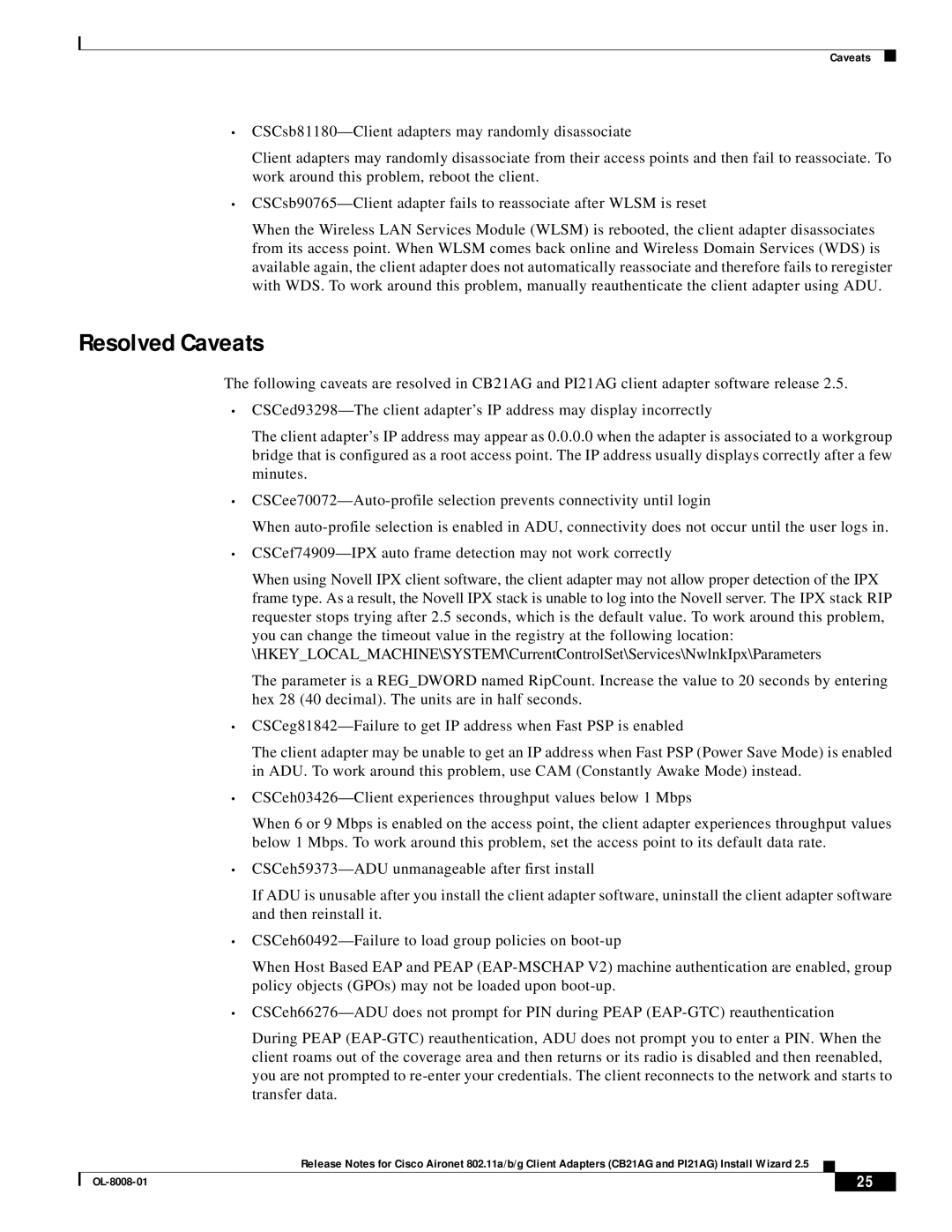
Caveats
•
Client adapters may randomly disassociate from their access points and then fail to reassociate. To work around this problem, reboot the client.
•
When the Wireless LAN Services Module (WLSM) is rebooted, the client adapter disassociates from its access point. When WLSM comes back online and Wireless Domain Services (WDS) is available again, the client adapter does not automatically reassociate and therefore fails to reregister with WDS. To work around this problem, manually reauthenticate the client adapter using ADU.
Resolved Caveats
The following caveats are resolved in CB21AG and PI21AG client adapter software release 2.5.
•
The client adapter’s IP address may appear as 0.0.0.0 when the adapter is associated to a workgroup bridge that is configured as a root access point. The IP address usually displays correctly after a few minutes.
•
When
•
When using Novell IPX client software, the client adapter may not allow proper detection of the IPX frame type. As a result, the Novell IPX stack is unable to log into the Novell server. The IPX stack RIP requester stops trying after 2.5 seconds, which is the default value. To work around this problem, you can change the timeout value in the registry at the following location: \HKEY_LOCAL_MACHINE\SYSTEM\CurrentControlSet\Services\NwlnkIpx\Parameters
The parameter is a REG_DWORD named RipCount. Increase the value to 20 seconds by entering hex 28 (40 decimal). The units are in half seconds.
•
The client adapter may be unable to get an IP address when Fast PSP (Power Save Mode) is enabled in ADU. To work around this problem, use CAM (Constantly Awake Mode) instead.
•
When 6 or 9 Mbps is enabled on the access point, the client adapter experiences throughput values below 1 Mbps. To work around this problem, set the access point to its default data rate.
•
If ADU is unusable after you install the client adapter software, uninstall the client adapter software and then reinstall it.
•
When Host Based EAP and PEAP
•
During PEAP
Release Notes for Cisco Aironet 802.11a/b/g Client Adapters (CB21AG and PI21AG) Install Wizard 2.5
| 25 |
| |
|
|
